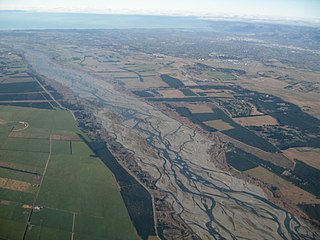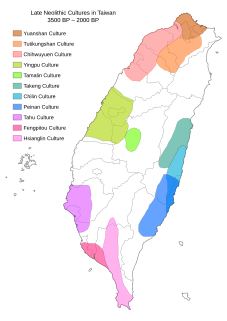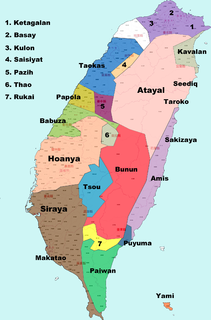
Chiayi County is a county in southwestern Taiwan surrounding but not including Chiayi City. It is the sixth largest county in Taiwan.

Yunlin County is a county in western Taiwan. It is located east of the Taiwan Strait, west of Nantou County, and is separated from Changhua County by the Zhuoshui River and from Chiayi County by the Beigang River. Yunlin is part of the Chianan Plain, a flat land known for its agriculture. Agricultural products of Yunlin County include pomelo, tea leaves, suan cai, papaya and muskmelon. Yunlin's rivers give it potential for hydroelectricity. Douliu is the largest and capital city of Yunlin. Yunlin is one of the least developed counties on the West coast, and suffers from emigration.

Chiayi, officially known as Chiayi City, is a provincial city located in the plains of southwestern Taiwan. Formerly called Kagee during the late Qing dynasty and Kagi during the Japanese era, its historical name is Tirosen.
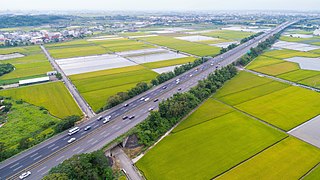
Guantian District is a rural district in central Tainan, Taiwan. It is the hometown of the former President of the Republic of China, Chen Shui-bian. It hosts a population of 21,659 residents.
The Chiayi-Tainan Luka or abbreviated Chianan Luka was a professional baseball team in the Taiwan Major League (TML) that existed from 1997 to 2002. Its homes were Chiayi County Baseball Stadium(not the Chiayi Baseball Field used by its CPBL then counterpart Chinatrust Whales) and Tainan Baseball Field. Except for winning championship in TML's first season in 1997, this team did not perform too well throughout its history and it only ever attracted corporate sponsors in 2000 and 2001. As a result, this team used its home cities' names as its name for most of its lifespan, rather than a company's name. After TML merged with the Chinese Professional Baseball League (CPBL) in 2003, this team merged with Taichung Agan and exchanged its name with Taipei Gida, which was further changed to Macoto Cobras since 2004.
Changhua Plain, which is sometimes listed as "Changhua Coastal Plain", is an alluvial plain in central Taiwan on the west coast between the Old Zhuoshui River (舊濁水溪) and Dadu River regions, and bordered to the east by the Bagua Plateau.

Shanhua District is a suburban district of Tainan, Taiwan. Until December 25, 2010, it was an urban township in the dissolved Tainan County, which is now merged with the original Tainan City to form a single special municipality.
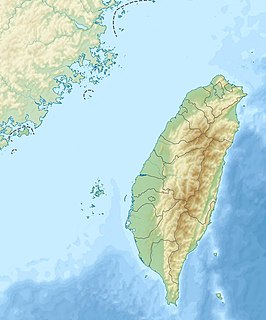
The 1964 Baihe earthquake, also known as the Great Baihe earthquake, measured 6.3 local magnitude, and occurred at 20:04 CST (UTC+8) on 18 January in Baihe Township of Tainan County, Taiwan. The hypocenter of the earthquake was 20 kilometers deep. The earthquake killed 106 people, destroyed 10,924 buildings, and caused a great fire in Jiayi City. It was the sixth deadliest earthquake in 20th century Taiwan, and the third deadliest post-World War II, after the 921 earthquake and the 2016 Taiwan earthquake.

Chianan Irrigation, also known as the Kanan Irrigation System, was built for promoting the agricultural productions of Chianan Plain of Taiwan. The name "chia-nan" was derived from two place names among its surrounding area called Chiayi and Tainan. Although it includes some assistant facilities, such as the Wusanto Reservoir, the term "Chianan Canal", in a narrow sense, would only mean the canals of this system.
Districts are administrative subdivisions of Special municipalities and provincial cities of Taiwan. There are two types of district in the administrative scheme.

Zhuluo County was a political division in Taiwan from 1684 to 1787, during Qing Dynasty rule of the island. Initially encompassing the underdeveloped northern two-thirds of Taiwan, the county shrank in size as the population and economy of the north and central western plains grew and new counties were created. In 1787 the county underwent further restructuring and was renamed Chiayi County.

Wushantou Reservoir, sometimes spelled Wushanto or Wusanto, is a reservoir and scenic area located in Lioujia District and Guantian District of Tainan, Taiwan. It is also referred to as Coral Lake due to its zigzagging shoreline. The reservoir was designed by engineer Yoichi Hatta and was the largest in Asia at the time of its completion in 1930.

Chiayi City Government is the government that governs Chiayi City of the Republic of China.

Deng Feng-Zhou is a Chinese poet, local history writer, Taoist Neidan academics and environmentalist.

The Chiayi Cultural and Creative Industries Park is a multi-purpose park in North District, Tainan, Taiwan.

In Taiwan, the North–South divide is also known as North-South imbalance or North-South developmental gap, refers to the uneven distribution of resources in regard to political, wealth, medical, economic development, education and other aspects across the north-south part of the country over past decades that has drawn the social and cultural differences between northern and southern Taiwan today. The core spiritual of which is derived from Southern Taiwanese's long-standing mindset as they believed they had been treated and regarded as socially inferior by the Taiwanese central government. The anger from the south quickly echoed throughout central Taiwan and eastern Taiwan as they also thought they're not fairly treated by the central government, compared to the northern part of Taiwan. It was known from the history that Taiwanese central government's policy support about the local's industrial development as well as public infrastructure is the critical determinant of a local city's future prospect on population.
By-elections for the Ninth Legislative Yuan were held in 2019, two on 27 January and four on 16 March, at Taiwan to elect 6 of the 113 members of the Legislative Yuan for the remaining term until 2020.


